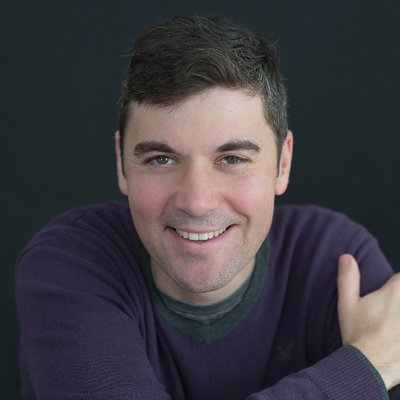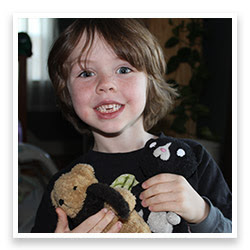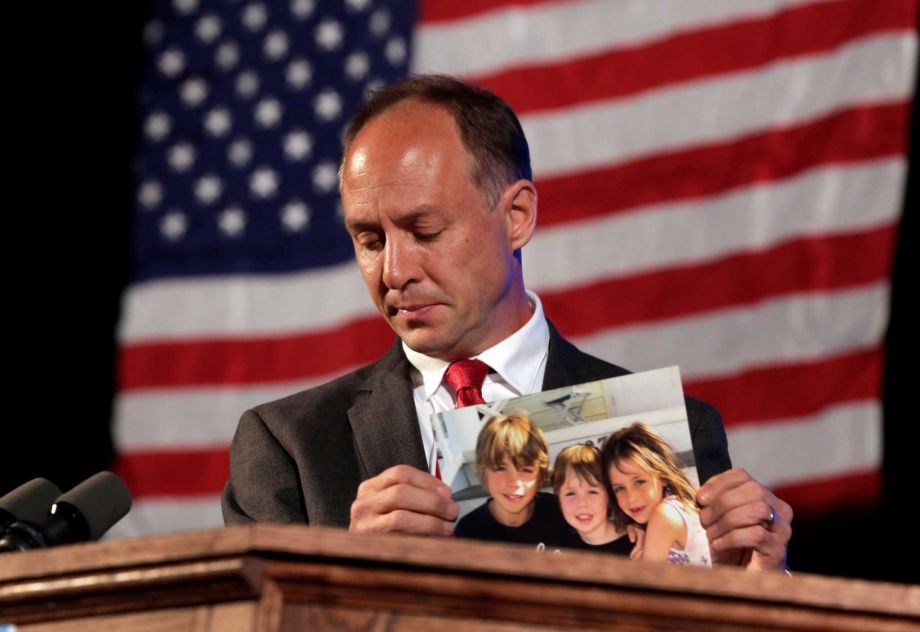EDITOR'S NOTE: Mass shootings have become a tragic American story. School shootings are an especially searing chapter in that narrative. This week marks the 20th anniversary of Columbine, a high school in Colorado where 13 students were shot to death. Also this week, the South Florida Sun Sentinel won the Pulitzer Prize for Public Service — considered the gold medal of the Pulitzers — for its extended coverage of last year's shootings at a high school in Parkland, Florida, where 17 people were killed. Journalist and teacher Matt Tullis went back to a page in that chapter to hear from the parents who get caught in the glare of news coverage even as they are dealing with unimaginable loss.
As host of Gangrey: The Podcast, I’ve interviewed scores of reporters who have covered events so tragic as to be unimaginable. Among them: John Woodrow Cox about his deadline story for the Tampa Bay Times about an infant who drowned in the family swimming pool; Kim Cross about her book “What Stands in the Storm,” based on interviews with families who lost loved ones in the 2011 tornadoes that devastated Alabama; and Pulitzer winner Lane DeGregory, who has a portfolio of heartbreaking stories under her byline, including that of 5-year-old Phoebe Jonchuck, whose father dropped her from the Sunshine Skyway Bridge into Tampa Bay.
In those conversations, I get to ask what all journalists wonder: How do reporters get access to reluctant subjects? How do they get people to talk about such intimate and painful events? And how do they weave that material into compelling, relatable stories?
Three years ago, I moved to Newtown, Connecticut, for a teaching job at Fairfield University. Newtown, in case you don’t remember, is home to Sandy Hook Elementary School, which is home to the December 2012 shootings that left 20 children and six adult staff members dead.
Every year since the shootings, I have made it a ritual to read “Into the Lonely Quiet,” the elegiac piece Eli Saslow wrote for the Washington Post six months after the tragedy. But after landing in Newtown — I actually have a Sandy Hook address — I found myself reading Saslow’s piece differently than I had in the past. Before, I always wondered how Saslow, the journalist, did what he did. Now I wondered how the Bardens, one of the families devastated that day, did what they did: Allow Saslow into their lives so he could then relay their pain to the world.
I’ve spent much of my career as a journalist and journalism educator thinking about the reporter. Now I find myself thinking about the subjects. What is the story process like for them, and what can they tell us to make that process better for everyone involved?
That interest was already keen, but intensified last month when news broke of the suicide of Jeremy Richman, father of Sandy Hook first-grader Avielle Richman. Another tragic death. Another event that set off a new flood of TV cameras, ringing phones and unimaginable questions.
So I reached out to Saslow to talk about his reporting process again, and also to Newtown parents Mark Barden and Nicole Hockley to hear their side of the story. All were generous with their time and candor — especially Barden and Hockley, since I had to request a second interview after my recorder failed during the first. I also included parts of the interviews in a Gangrey podcast.
Mark Barden doesn’t recall a lot about the days Saslow spent with his family. That was in late spring of 2013, when Newton residents were approaching the six-month anniversary of the Sandy Hook shootings. Mark’s son, Daniel, was among the 20 first-graders killed.
“I remember feeling very comfortable with him,” Barden said of Saslow. “He was approachable and accessible. He managed to take that very deep and personal dive to get that compelling story he did without seeming to be prying or getting all into our private business.”
In the immediate wake of the shootings, the Bardens and other grieving parents had been pressed for interviews on a near-daily basis. Some reporters hid outside the victims’ homes, waiting for a change in police shifts so they could charge forward to ring doorbells in quest of a comment. When parents did agree to talk, the interviews were often one-and-done: the reporter showed up — with notebook, microphone, camera or all three — then quickly left to file a story.
That wasn’t the case with Saslow. The Bardens, because of their own reporting process, knew that going in.
“The reporting is different, but our motivation to do it has been the same in that we understood the value in telling the story,” Barden told me. “So we approached every media request with the same vetting process.”
That process involved the family exploring two key questions: Is this person going to do justice to the story? And will the story motivate people to take next steps, in whatever ways that means to them?
Saslow was vouched for by a public relations official from Washington, D.C. who had been working with Sandy Hook families, and by the strength of his previous work. So the Bardens agreed to provide him access in a way they hadn’t before, allowing Saslow to be with them 12 hours a day for as long as a week, or more if needed.
“We felt this was certainly an opportunity for average Americans to have a window into the devastation and how this impacts a family,” Barden said. “We just felt there was such important value in that.”

But this is where it gets tricky. The Bardens and other Sandy Hook families who have spoken publicly have their own agenda; they want to inspire action in a variety of areas, including the failures in America’s policies towards responsible gun use and how mental health issues are connected with mass shootings. So they open their lives to journalists, knowing that they won’t have a say in the final story. And the reporters — the good ones — approach those families respectfully and with an open mind, but with the knowledge that they write not for the story subjects, but for a broad audience.
That dilemma, said Saslow, is one of the most challenging things about the kind of journalism he does. He’s not only written about the Barden family, but profiled the veteran security guard at Marjory Stoneman Douglas High School in Parkland, Florida, who was vilified for not rushing into the school as 17 were shot to death. He wrote the aftermath of a block that ended in the death of a high school football player. And he wrote about a struggling survivor of the 2015 shooting at Umpqua Community College in Oregon.
“One of the things that’s most difficult for me as a reporter, and I think for a lot of us, is recognizing who we’re writing for, even in these really intimate, messy, difficult stories,” Saslow told me. “We are not writing the stories for the people that they’re about. And if, in the end, we begin writing them for the people that they’re about, that corrupts the journalism.”
This awareness is what makes “Into the Lonely Quiet” such an amazing work of narrative journalism, and what makes Saslow’s work worth studying. The story is devastating, and doesn’t shy from the harsh reality of lives ripped apart by such loss. Consider this paragraph that captures collective and individual grief:
There were 26 of them in all — 26 victims, which meant 26 families left adrift, grasping for a way to continue on. Some found it in church, returning to the pews every Wednesday and Sunday with a Sandy Hook Bible group, lighting 26 candles each time they went. Others found it in the spiritual medium that contacted victims’ families on Facebook, offering to facilitate a private seance and “connect them with the other side.” Some started nonprofit foundations in their child’s name or escaped back into jobs in Manhattan or ordered wine by the case or planted 26 trees or considered moving out of state or installed blackout curtains for privacy. One mother took a job sorting corporate donations to the Newtown community fund, organizing 26,000 bottles of “Sandy Hook Green” nail polish and 2,600 wool blankets, because the magnitude of the donations helped reaffirm the magnitude of her loss.
Despite Barden’s complimentary words about Saslow, that rawness is what he and some other Sandy Hook families found discomfiting about his piece.
“I just felt it didn’t depict Mark and his family and the loving and supporting network that they had,” Nicole Hockley told me. “It didn’t give a sense of hope.”
Hockley’s son, Dylan, was killed in the shootings. She and Barden are both founders and managing directors of Sandy Hook Promise, a nonprofit created to protect children from gun violence and support gun safety reforms. She also appears in “Into the Lonely Quiet,” as Saslow accompanied her, the Bardens and another parent on a trip to Delaware, where the parents spoke with legislators about gun laws.
Sandy Hook families had been schooled by professionals and experience on how to deliver effective messages. Never show rage or brokenness, but express grief in ways that were “resolute, polite, purposeful and factual.” Never argue for "gun control," but for “gun responsibility.” During the visit, the parents were introduced for a moment of silence, then watched as lawmakers passed motion after motion, including one recognizing the winner of the state peach pie eating context. Saslow was able to show that disconnect between realities — that of the families and that of public policy — and how stark it was to the Hockley and the Bardens:
How was it, they wondered, that government could roll through its inconsequential daily agenda but then stall for months on an issue like gun control?
And in another passage:
The uncertain path between a raw, four-minute massacre and U.S. policy was a months-long grind that consisted of marketing campaigns, fundraisers and public relations consultants.
The depth of loss and discouragement is woven throughout Saslow’s piece. And true as it is, it is something Hockley, and perhaps some others, wished had been less prominent.
“It was a very sad piece,” Hockley said. “I had wanted something that pulls people through that loop of despair, but then brings them out the other side. For me, it just kind of left people hanging. It was beautifully, beautifully written, but I thought it was very depressing.”
(Full disclosure: I’ve gotten to know Hockley over the last year, as I’ve done some fundraising for Dylan’s Wings of Change, a foundation created in memory of her son.)
Hockley even said she prefers doing live broadcast interviews, where she can control the point of the story.
The story is, indeed, sad. My own children were starting elementary school when Sandy Hook was attacked, and I couldn’t read the coverage at first. Even Saslow, who has three children said that if it were about his children, he “couldn’t bear to read it.”
He starts with Daniel Barden searching boxes for the right photo of Daniel to be put in Mother’s Day cards and sent to politicians across the country. When his wife asks if he thinks it will make a difference, he says simply: “I don’t know.” The piece ends in “the worst hour of the day,” which Mark and Jackie had once spent alone with Daniel after the older children had left for school and he waited to race to his own school bus.
The school bus came. The school bus went.
“What do you want to do?” Mark asked, and in that moment, the answer to both of them was clear.
“What can we do?” Jackie said.
“Nothing,” Mark said, and he sank down next to her on the couch.

And yet Barden and Hockley consider Saslow as one of the good journalists they’ve dealt with in the last six years. The Sandy Hook parents keep a list of journalists to whom they won’t talk with because of how they’ve been treated, and a list of those they will. Saslow is on the latter list. He’s the kind, they said, who comes in not with his own agenda, and not with a goal of simply asking questions that will make them cry, but who wants to do his best to understand their reality.
Saslow spent about a week with the Bardens in 2013. He showed up at their house early in the morning, just as the family’s two older children were getting ready for school. He stayed all day long, not leaving until the Bardens were going to bed.
Mark Barden remembers Saslow hanging out at the end of the driveway with his daughter Natalie and her friends, where the girls had set up a lemonade stand. He remembers Saslow being with him and his wife Jackie at a diner in what, to me, is the most heartbreaking scene in Saslow’s narrative. The Bardens had made the rare decision to go out for breakfast, and so they drove to a restaurant nine miles out of town because, as Saslow writes: “There were no memories here.” All was good until another family walked in, there to celebrate the 7th birthday of their son, who went to Sandy Hook Elementary but had survived the shooting because he was assigned to the other of two first-grade classrooms. The two sets of parents exchanged awkward greetings, then turned back to their own lives.
“Should we leave?” Jackie said, whispering to Mark, once the mother was out of earshot. “Would it be easier?”
“It might be,” Mark said.
But instead they sat at the table and watched as the waiter brought the boy a gigantic waffle covered in powdered sugar, berries and whipped cream. They watched as the waiter stuck a candle into the center of that waffle, and as the mother sang “Happy Birthday” and took a picture with her phone. They watched as the boy swept his fingers through the whipped cream, smearing it across his mouth and face while his mother laughed. “You’re so silly,” she said.
Barden knew he and his family were making a sacrifice by letting the Washington Post into their home for such an extended period of time. They were lucky that the reporter who was there knew they were making that sacrifice.
“The real risks and the real sacrifices are taken by the people we’re writing about,” Saslow said. “It’s a super scary thing to allow a reporter into your life, knowing that you are going to have no say over the outcome. And I would guess that the reason that most people do it is because they also understand that what they’re dealing with, what they’re going through, is important in some way and is worthy of being seen and felt by people outside the house.”
“But,” Saslow continued, “to be willing to make yourself that vulnerable and to bear that pain and that hurt to a stranger who’s going to be in your house for 12 hours a day, that’s a really courageous thing to do. That’s not easy.”

No, it’s not easy. Barden will tell you that. But in the end, the Bardens and Saslow all had the same goal: To show the world what it’s like to lose a young child to a mass shooter. Saslow’s observations on that dark reality just ended up being even darker than some had hoped.
“How does an ordinary American family who has been visited by such horrible tragedy manage this and cope with this on a regular day-to-day that people can relate to?” Barden said of what his family wanted to get across. “And that’s where we saw the real value. It’s kind of this unsaid message of, ‘Here it is. This could be you. This is what it looks like.’”



